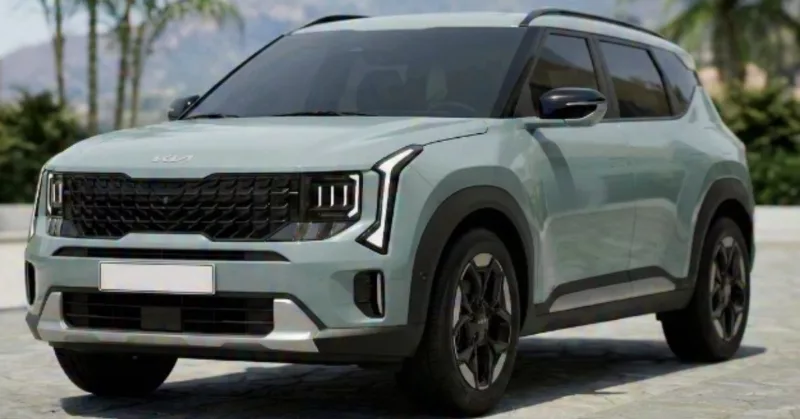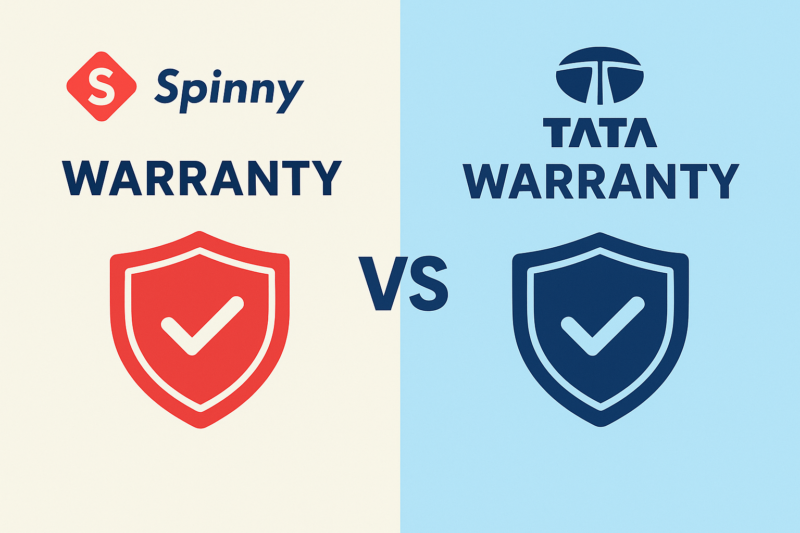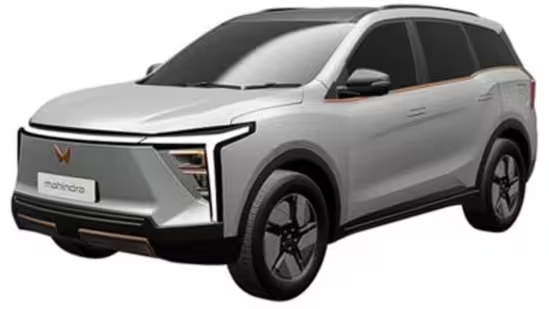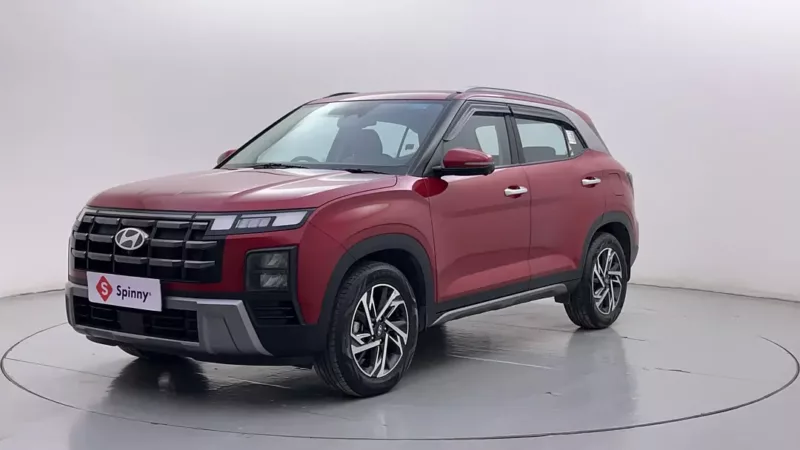Kia cars have been widely accepted by Indian car buyers. With its line-up that includes cars like Sonet, Seltos, Carens, and Carnival, Kia has been enjoying success in almost all the segments it is present in. In fact, if you want to buy a brand new Kia Carens you need to wait for 20 months before you can see it in your garage. Another car which has been received well by the Indian market is the Kia Seltos. For those who do not want the three-row Kia Carens, Kia Seltos offers a more complete package. The car looks big and roomy on the outside and does have an impressive road presence as compared to other midsize SUVs in its segment.
If you want a new off-the-shelf Kia Seltos for yourself, there are seven trims to choose from. The base variant of the Kia Seltos starts at Rs. 10.49 lakh and goes all the way up to Rs. 16.99 lakh. You can choose either a 1.5-litre petrol engine, a 1.5-litre diesel, or a 1.4-litre turbo petrol with five different gearbox options that include a six-speed manual, a six-speed automatic, a seven-speed DCT, an IVT, or an iMT which is a manual gearbox with automatic clutch. Launched in August 2019, Kia Seltos has been in demand for over three years now. Currently, the waiting period for a new Kia Seltos is up to seven months depending on the variant and your nearest dealership. If you do not intend to spend your hard-earned money on the cabs that charge exorbitant rates these days for the next seven months, here are some alternatives you can consider instead of a new Kia Seltos.
Table of Contents
MG Astor

A relatively new entry to the ever-expanding midsize SUV segment, MG Astor is the younger sibling of the very famous MG Hector. The MG Astor is here to give direct competition to the segment leader – Hyundai Creta – and the recently launched Mahindra Scorpio-N. Customers get to choose from either a 1.5-litre petrol engine or a 1.3-litre turbocharged petrol motor. The power and torque output of both the engines are in sync with the competition with a few numbers here and there. There are three gearboxes to choose from – a five-speed manual, a six-speed automatic, and a CVT. Unlike the Creta and the Scorpio-N, there is no diesel engine to choose from.
MG Astor Style EX – the base variant of the Astor with the manual transmission and the 1.5-litre engine – starts at Rs. 10.32 lakh. This makes the MG Astor Style EX Rs. 17,000 cheaper than the base version of the Kia Seltos. The top-spec Sharp (O) variant – with the turbo engine and the six-speed transmission – attracts a price tag of Rs. 18.23 lakh. This is Rs. 1.24 lakh more than the most premium trim of the Kia Seltos, but you can expect it to be a more feature rich option than the most expensive Kia Seltos. This trim of the MG Astor comes with ADAS (Advanced Driver Assistance System) which can alert the driver of the vehicles ahead, accelerate or brake the car apart from controlling the steering to assist the driver. Both the cars can accommodate five adults happily without breaking a sweat. Being a new player in the market and keeping the trend alive of being an MG, the insides of an Astor will be refreshingly new and more appealing than that of a Seltos.
Talking about the size of the MG Astor, it is almost as big as the Hyundai Creta barring one or two centimetres here and there. On the outside, the MG Astor does look big and is difficult to miss on a busy intersection. It is longer than the Hyundai Creta, Kia Seltos, Skoda Kushaq, and Volkswagen Taigun, and still, somehow, has the shortest wheelbase among all these. This makes it slightly easy to drive in tight spaces and on city roads where traffic jams are as common as rains in the month of August. The other cars in the segment share their technology and parts with others – Creta and Seltos, Kushaq and Taigun, but the MG Astor is a lone wolf in this battle of the giants.
Waiting period for the MG Astor is approximately two to three months in most of the markets depending on the variant that suits your pocket and needs. This means waiting for four to five months less before you can stop spending a little fortune during the peak hours to reach your office on a weekday.
- Engine: 1.5-litre petrol, 1.3-litre turbocharged petrol
- Transmission: 5-speed manual, 6-speed automatic, CVT
- Mileage: NA
- Airbags: 2 airbags standard. Up to 6 airbags on the top end variant
- Fuel Type: Petrol
- Seating Capacity: 5
- Body Type: SUV
Skoda Kushaq

After a not-so-impressive first attempt at luring the Indian customers, Skoda is back with a new strategy. Skoda has started its second innings in the Indian market with the Kushaq and is relying heavily on its success in order to turn around its fortunes. To make things click with the Indian market, Volkswagen developed a platform specifically for the Indian market. This was done to keep the costs under check with added flexibility to use the same platform in most of their future cars. This platform, by no means, provides any less fun to the Skoda Kushaq, and the car delivers the same fun that the Skoda cars are known for without charging a premium for it.
Realising that pricing is the most important aspect in the Indian market, Skoda has priced the Kushaq quite aggressively. The base trim of the Skoda Kushaq starts at Rs. 11.29 lakh and hovers at Rs. 19.49 lakh for the topmost version. This means the base variant is Rs. 80,000 more than that of the Kia Seltos, and the top-end version is Rs. 2.5 lakh more expensive than that of the Kia Seltos. If it makes sense to spend extra for the Kushaq depends entirely on how much fun and excitement you want to extract from your car. There are two engine options to choose from – a 1-litre petrol engine, and a 1.5-litre petrol one. You also get to choose between a six-speed manual, a six-speed automatic gearbox, or a seven-speed DSG depending on how much human intervention you want while driving.
On the outside, the Skoda Kushaq looks nice and big. It has a larger wheelbase than that of a MG Astor, Kia Seltos, and Hyundai Creta which gives it a more planted drive on the highways and on the city roads. On the sides, it might remind you of the Volkswagen Taigun because they share the same doors, mirrors, roof rails, antenna and body cladding. The typical Skoda grille at the front does give it an unmistakable look and the rear end is also neat and refreshingly different from that of the competition. In addition to everything, the GNCAP safety rating of 5 stars means that the Skoda Kushaq is one of the safest cars you would find in the market right now.
Depending on the trim and the place where you live, you can bring home your Skoda Kushaq in almost two months. That is 5 months less waiting time as compared to the Kia Seltos. If driving a car that provides more fun to the driver apart from delivering utmost comfort to the passengers makes sense to you, the Skoda Kushaq is a very serious option to consider.
- Engine: 1-litre petrol, 1.5-litre petrol
- Transmission: 6-speed manual, 6-speed automatic, 7-speed DSG
- Mileage: 17.88kmpl (1-litre manual), 15.78kmpl (1-litre automatic), 17.95kmpl (1.5-litre manual), 17.71kmpl (1.5-litre DSG)
- Airbags: 2 airbags standard. Up to 6 airbags on the top end variant
- Fuel Type: Petrol
- Seating Capacity: 5
- Body Type: SUV
Volkswagen Taigun

Like Skoda, its parent company – Volkswagen – too is starting its second innings in the Indian market under the new India 2.0 programme. Due to rising demand of the SUVs in the Indian market, Volkswagen decided to focus on the midsize SUV market. Volkswagen Taigun is here and it has already started to pay dividends to the German giant. The Volkswagen compact SUV is exactly the same car as the Skoda Kushaq; even donning the same dimensions. Not an inch here and there apart from wearing different clothes and showing off different badges. The characters vary to resonate with the brand they belong to, but it is the same tech under the hood.
Similar to the Skoda Kushaq, Volkswagen priced the Taigun to give a stiff competition to the leaders. The base version of the Volkswagen Taigun starts at Rs. 11.56 lakh and goes up to Rs. 18.71 lakh for the most expensive 1.5-litre version with the seven-speed DSG. The entry level Taigun is Rs. 1.07 lakh more expensive than its Seltos counterpart, and the top-end is Rs. 1.72 lakh costlier than the most expensive trim of the Kia Seltos. This might be a deterrent to some of the customers but considering that the Taigun has some of the finest elements of German engineering, it deserves it. The options for the drivetrain remain the same as that of a Skoda Kushaq – a 1-litre petrol engine, or a 1.5-litre petrol one. The gearboxes – a six-speed manual, a six-speed automatic gearbox, or a seven-speed DSG remain the same too.
From the sides, the Volkswagen Taigun will remind you of Skoda Kushaq but it is the front and the rear that will remove all doubts. The front grille gives the Taigun a more menacing, yet subtle, look. The rear end with its redesigned tail lamps look unique and aesthetically pleasing to the eyes. Providing a good combination of German engineering and affordability, the Taigun looks big and premium from the word ‘go’. The fact that the base model comes with electronic stability control, dual front airbags and tyre pressure deflation warning make it a good value for money. Like the Skoda Kushaq, Volkswagen Taigun too has an NCAP safety rating of 5 which adds to the already impressive list of things it promises in the midsize SUV segment.
If the words mentioned above got you excited about the Volkswagen Taigun, there is some good news for you. The waiting period for the Volkswagen Taigun is one of the lowest in the market. Considering the variant that appeals to you, and the efficiency of your nearest dealership, you can drive your own Volkswagen Taigun in as little as 20 days, going up to 45 days. The fact that this car is as capable as the Skoda Kushaq says a lot about its viability as an alternative to the Kia Seltos.
- Engine: 1-litre petrol, 1.5-litre petrol
- Transmission: 6-speed manual, 6-speed automatic
- Mileage: 19.2kmpl (1-litre manual), 17.2kmpl (1-litre automatic), 18.4kmpl (1-litre manual), 17.8kmpl (1.5-litre DSG)
- Airbags: 2 airbags standard. Up to 6 airbags on the top end variant
- Fuel Type: Petrol
- Seating Capacity: 5
- Body Type: SUV
Used Hyundai Creta

Hyundai has been the undisputed champion of the midsize SUV segment for a while now. The only car that has managed to come close to the Creta in terms of sales in the Indian market is the Kia Seltos. From the time of its launch in 2015, the Hyundai Creta has been a feather in Hyundai’s cap, and the market shift from small cars to SUVs surely worked in its favour.
The current-generation Hyundai Creta lets you choose between three engine options – one diesel and two petrol. You can choose from a 1.5-litre petrol engine, or a 1.4-litre turbocharged petrol engine, or a 1.5-litre diesel engine for that extra torque. The 1.5-litre petrol engine can be mated to either a six-speed manual gearbox, or an iMT as found in a Kia Seltos as well, or an IVT. The 1.5-litre diesel motor gets only the six-speed manual or the six-speed automatic drivetrain. The top-shelf 1.4-litre turbo petrol engine comes with a seven-speed DSG. The 1.4-litre turbo petrol engine and the seven-speed DSG is not available in its brother from another mother – Kia Seltos.
There is little denying the fact that the current Hyundai Creta looks bulky on the outside. Some might argue that the road presence is not as commanding as that of a Volkswagen Taigun or the MG Hector. But this has a lot to do with the fact that the roads nowadays are flooded with Hyundai Creta which also talks volumes about it being the supreme leader of this segment. The car is at par with the competition if not better, and the reliability factor that comes free with the Hyundai tag surely adds an extra point it gets from the customers.
The fact that the Hyundai Creta and the Kia Seltos are the two highest-selling cars in the midsize SUV segment means there is a significant demand for these cars. In September 2022, Hyundai sold over 12,000 Creta in the Indian market, and the Kia Seltos was marginally behind at the 11,000 mark. As expected, this means a waiting period of anywhere between eight to ten months. If you are a Hyundai/Kia loyalist who does not want to look at the European manufacturers, a used Hyundai Creta might exactly be what you are looking for. Usually, in the used car market, you can find a Hyundai Creta that has been tested and approved by the experts for as low as Rs. 7.1 lakh. The fact that this might be a variant higher up the food chain does give it a brilliant value for money.
- Engine: 1.5-litre petrol, 1.4-litre turbo petrol, 1.5-litre diesel
- Transmission: 6-speed manual, 6-speed automatic, IVT, iMT, 7-speed DSG
- Mileage: NA
- Airbags: 2 airbags standard. Up to 6 airbags on the top end variant
- Fuel Type: Petrol, Diesel
- Seating Capacity: 5
- Body Type: SUV
Used Kia Seltos

This is a no brainer. If you cannot stop thinking about the Kia Seltos and want nothing else but that, then a used Kia Seltos makes most sense. The fact that it has been over three years that the Seltos was launched in the Indian market, there is a good enough chance to find a Kia Seltos in the used car market. Unlike some of the international markets, India has not received a facelifted Kia Seltos. This means that a brand new Kia Seltos does not look visibly different than a slightly old Kia Seltos.
Everything that has to be said about the Kia Seltos has already been mentioned above. The engine options, the transmissions to choose from all remain the same including the looks. It just boils down to your personal choice and if you want to wait for seven to eight months before buying your own Kia Seltos.
In the used car market, a fairly new Kia Seltos can be found for a little over Rs. 10 lakh. Considering it was launched only in 2019, most of the Kia Seltos you would find in the used car market would be in great condition and would provide a much better value for money than many other options.
- Engine: 1.5-litre petrol, 1.4-litre turbo petrol, 1.5-litre diesel
- Transmission: 6-speed manual, 6-speed automatic, IVT, iMT, 7-speed DSG
- Mileage: NA
- Airbags: 2 airbags standard. Up to 6 airbags on the top end variant
- Fuel Type: Petrol, Diesel
- Seating Capacity: 5
- Body Type: SUV
Summary
Buying a car in a country like ours is no easy feat. To finalise on a particular carmaker and a model can be a drawn out process, depending on various factors like your family size, your geographical location, your expectations from a car, and your adventurous side. Then comes the dilemma of choosing the right trim to suit your demands.
Throw in the used car market to this ring and it becomes next to impossible to choose between thousands of permutations and combinations. While some may not even consider buying a used car, there is a sizable portion of people who swear by the used car market. Like everything else in life, it all boils down to what you want from your car and how much are you willing to spend on it.



